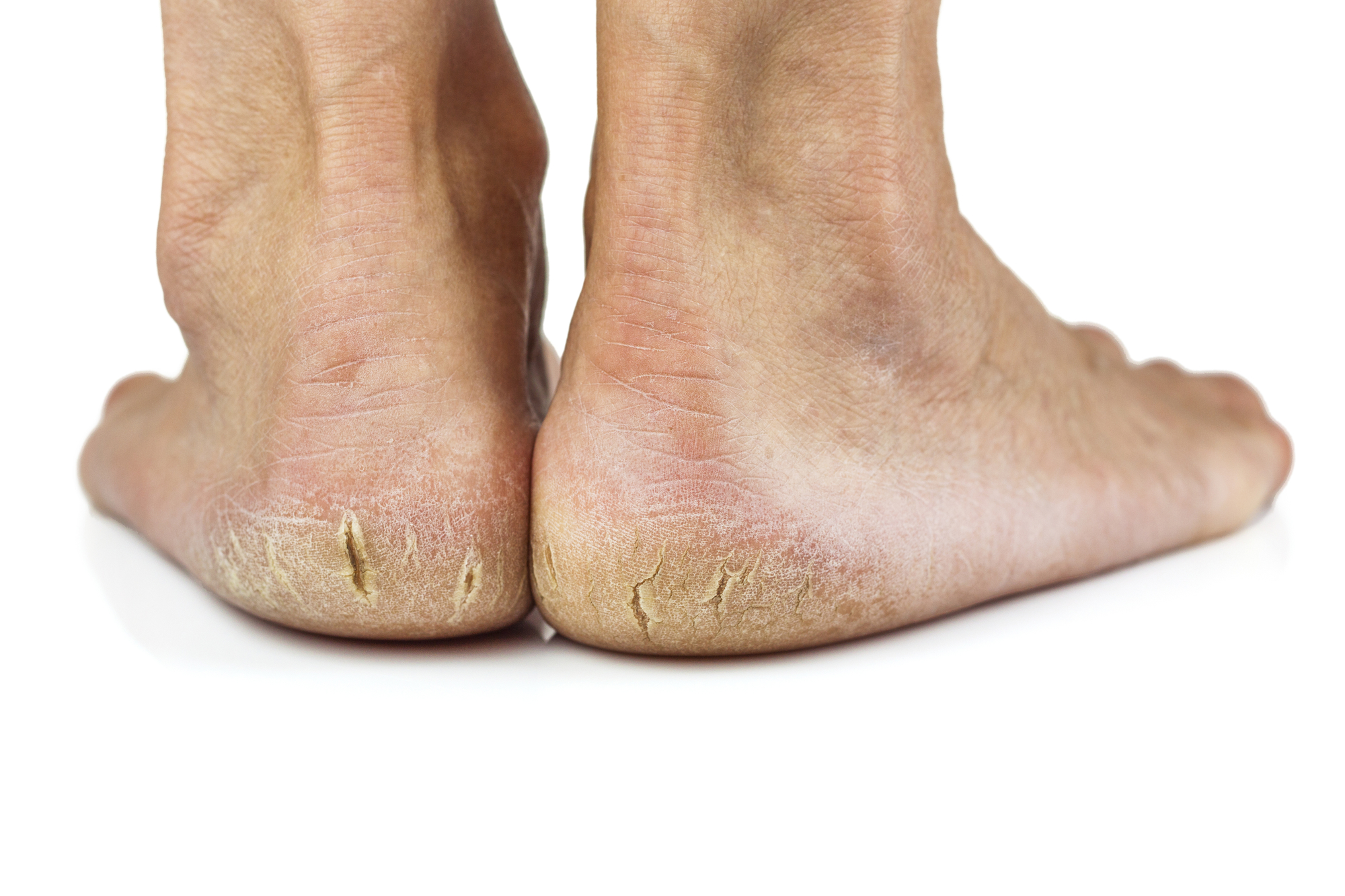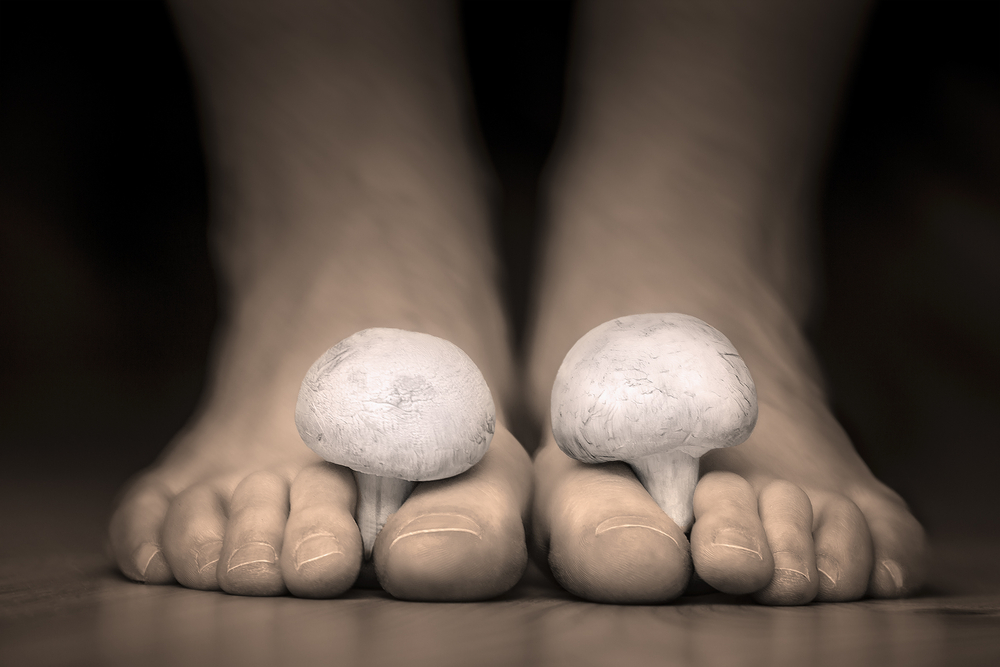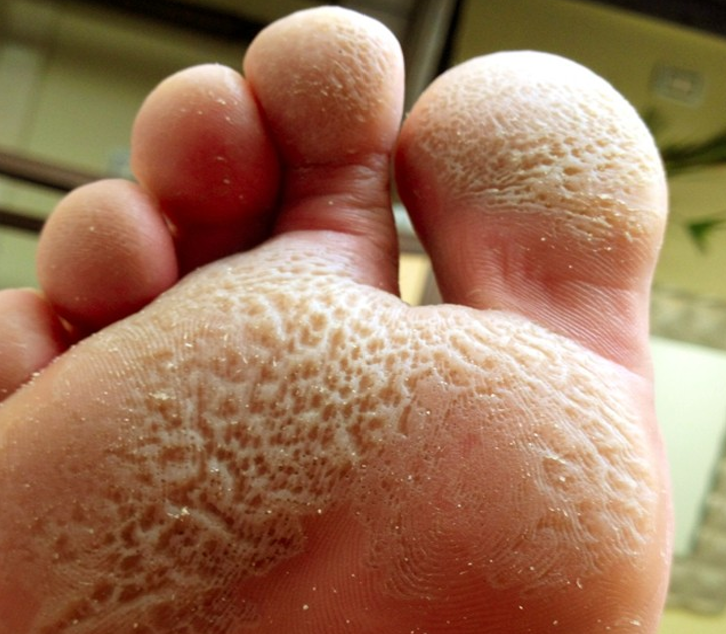Cracked heels, technically known as heel fissures and as rhagades in some European countries are unsightly, painful and can be a portal for an infection to get in. Because of that infection risk they do need to be taken seriously. The dry and thick skin that can develop around the periphery of the heels is prone to cracking leading to the problem of cracked heels.
Causes of Cracked Heels:
We all have a fat pad under our heels that is required for shock absorption and cushioning. As it carries out that function it expands out sideways from under the heel bone. For it to be able to do that, the skin and underlying tissues need to be flexible to accommodate it. If the skin around the periphery of the heel becomes callused and dry, then it looses that flexibility to accommodate the normal movement of that fat pad. When the fat pad expands, that will result in the cracked skin around the edges of the heel area.
Wearing open heel shoes or going barefoot increases the risk that the fat pad can expand from under the heel bone.
Once that dry and thick skin cracks, it won’t and can’t heal. Every step you take opens up the cracks. That cracked callused skin then pulls on the “good” skin below the crack and can then tear it. This is painful, may even bleed and can act as that portal for an infection to get in.
Treatment of Cracked Heels:
To treat cracked heels, you need to deal with the factors that cause it, by throwing the kitchen sink at them:
- The first step is to deal with the thicker and callused skin around the heel. This needs to be removed. A podiatrist is pretty good at debriding this. You could use a foot filer or an electric callus remover to file it away. If you do it yourself, be careful not to remove too much and take extra care (or don’t do it yourself) if you have diabetes. If the good skin below the harder skin that was removed is split, then this should be covered with an antiseptic and tape used until it has heeled.
- The second step to to make the skin more “flexible” and supple. Once the harder and thicker skin has been removed, then the regular application of a cream is needed to be applied to moisturize the skin. The urea based creams are good for this. This should be done twice a day initially and later daily as it improves. Sometimes the cream can be applied in copious amounts and a silicon gel heel protector worn overnight for it to soak in.
- Another step is to control that heel pad expansion that occurs and puts the stress on the heel skin. It is best to avoid barefoot and shoes that are open around the heel (eg like flip flops), as they allow for that fat pad expansion. In cases where that heel fat pad expansion is a lot, heel cups can be worn.
- Unfortunately this is not usually a one-off approach. This tends to be an ongoing problem that is going to need ongoing maintenance. You are going to need to keep applying a good cream to the skin and periodically remove the hard callused skin either by seeing a podiatrist or using a foot filer or electric callus remover.
Forum Discussion and Questions on Cracked Heels:
Cracked heels
Heel fissures
Treatment of Heel Fissures
Cracked heels
Any pearls to help with my cracked heels?
Personal Opinion on Cracked Heels:
The only way to deal with cracked heels properly is to put in the leg work. You have to keep at it. There is no simple solution except keeping at it. There is no magic pill or magic button. There is no diet issue or vitamin deficiency that causes cracked heels. You have to be in for the long haul to do this and keep working at it.
Author:
University lecturer, runner, cynic, researcher, skeptic, forum admin, woo basher, clinician, rabble-rouser, blogger, dad.



